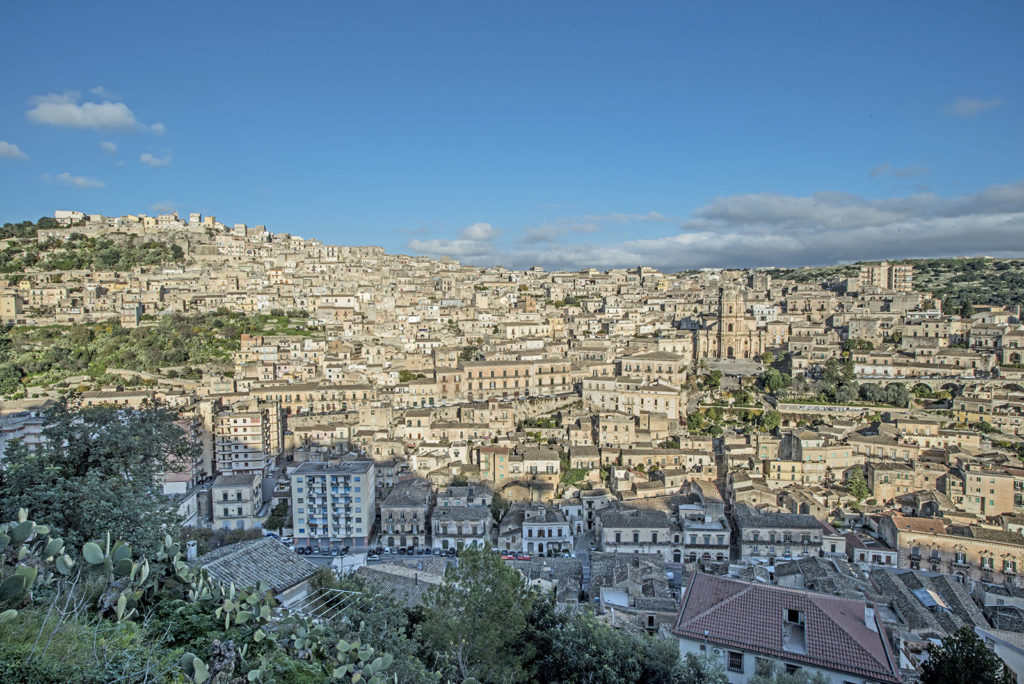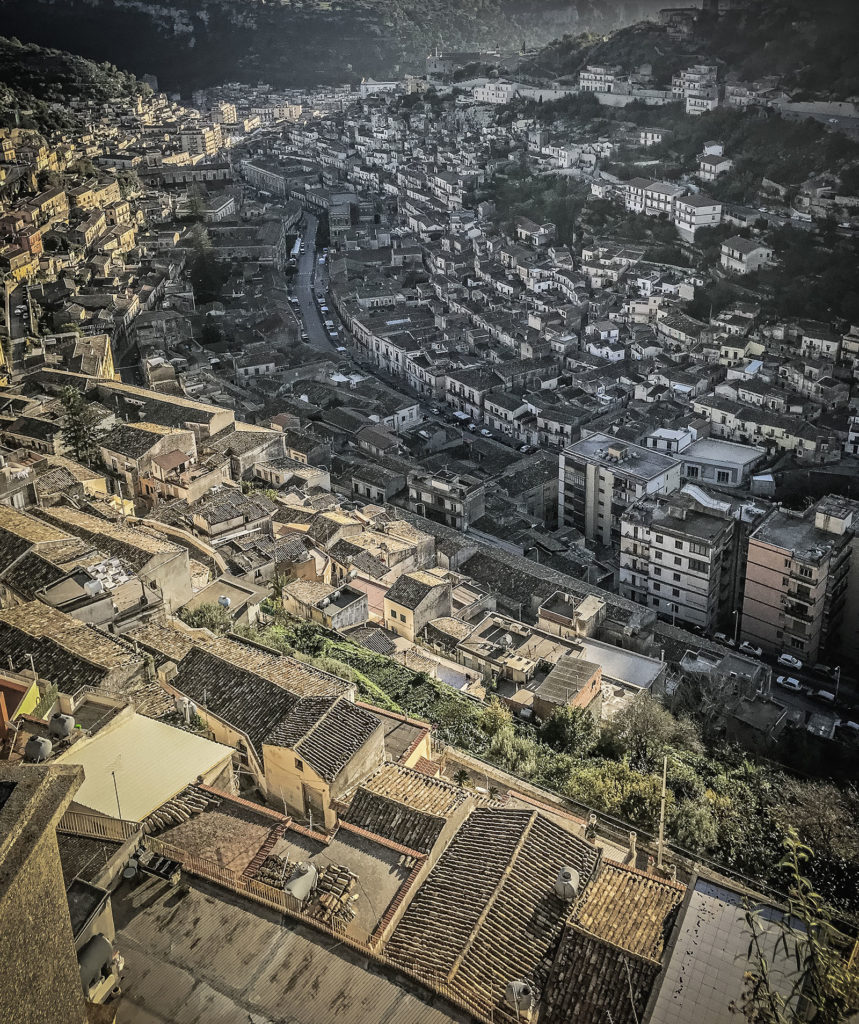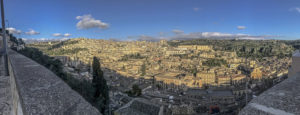The city of
Modica
, sat in the middle of the Hyblaean plateau between deep
quarries
, fits perfectly into the hills of the Hyblaean countryside which is rich in vegetation and typical
dry stone walls
.
 The inhabited centre is built across two districts, Modica alta (Upper Modica), in a high and rocky hilly area, and Modica bassa (Lower Modica), which is built around two streams.
The inhabited centre is built across two districts, Modica alta (Upper Modica), in a high and rocky hilly area, and Modica bassa (Lower Modica), which is built around two streams.

 The inhabited history of the Hyblaean city begins a long time ago. In fact, the first settlements date back to 1800-1400 BC.
The inhabited history of the Hyblaean city begins a long time ago. In fact, the first settlements date back to 1800-1400 BC.
The city we see today is the result of a transformation that took place after the earthquake of 1693. Unlike other towns in the Val di Noto, Modica was rebuilt on the same site. The city spaces were reorganised and reconstruction was supervised by the monastic orders and the rich and powerful agricultural nobility.
The earthquake destroyed what remained of the old medieval town and gave way to precious and noble residences in the valley floor, as well as imposing and majestic churches, veritable masterpieces of the reconstruction.
The landscape is characterised by the typical Modica stone with infinite shades from beige to white, and quartz veins that make it shine under the hot sun. Until the beginning of the 20th century Modica was crossed by small streams and a series of bridges that connected the various parts of the city. Back then it was decided to bury the streams and the old river became the current street, Corso Umberto, today overlooked by the town hall of Modica and the ancient Palazzo Manenti.